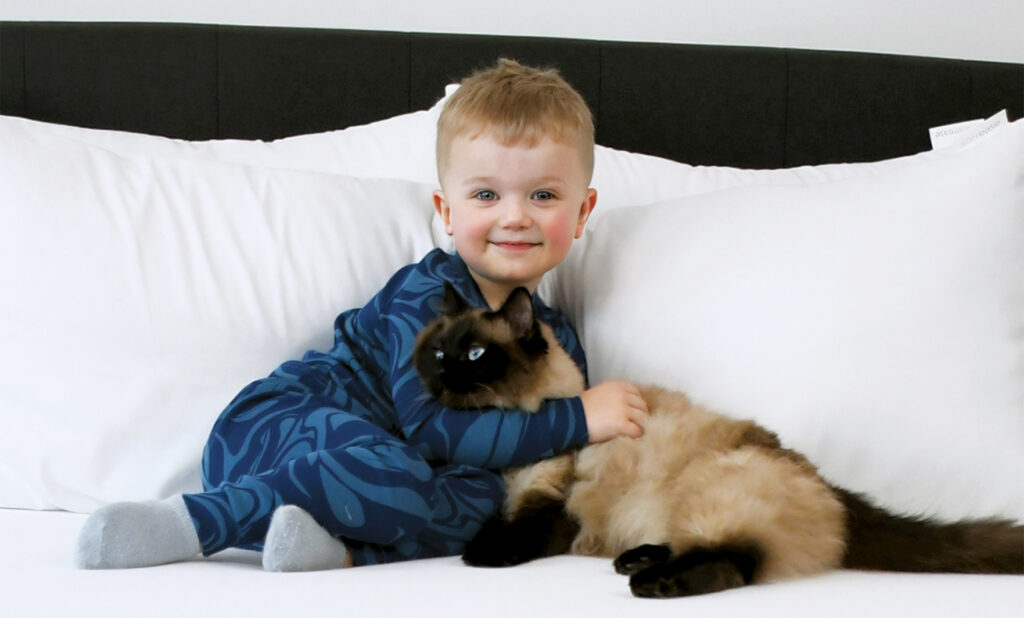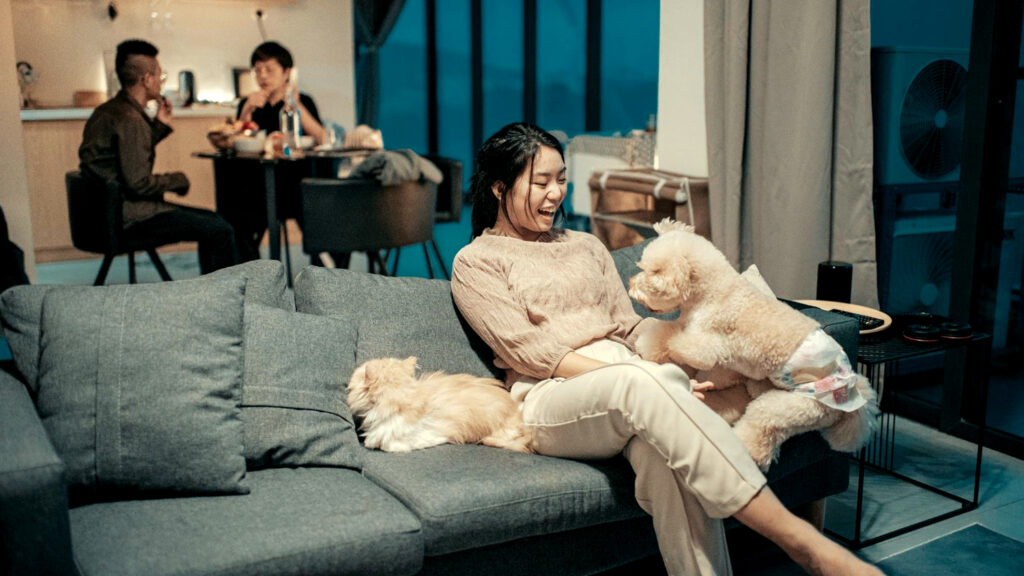
The COVID pandemic was hard on everyone, but for allergy sufferers, it meant having to announce, “It’s allergies, not COVID!” after every sniffle, cough or sneeze as strangers glared and moved well beyond the required 6-foot distance. Fortunately, those days have passed, but the number of people dealing with allergies has continued to grow.
There are several factors driving this increase. For one thing, climate change seems to have lengthened and intensified allergy season, says Patrick Seiffert, senior vice president of marketing and product development for American Textile Co. Inc. Headquartered in Duquesne, Pa., American Textile provides various sleep solutions like mattress and pillow protectors to retailers, e-commerce and hospitality customers worldwide.
Another likely contributor to the indoor allergen load has been the COVID-fueled rise in pet ownership, says Sofie Depluverez, Ph.D., R&D manager for Devan Chemicals, a producer of sustainably developed textile finishes. A Pulcra Chemicals company, Devan is headquartered in Ronse, Belgium; Pulcra has offices in Rock Hill, S.C., and is headquartered in Germany.
As people brought more dogs, cats and other pets into the house during the pandemic, there was a corresponding increase in the exposure to pet dander and subsequently in allergies related to this, she explains. Dust mites are another issue, with as many as 30% of people in the U.S. exhibiting a sensitivity to house dust mites—making this one of the “best known allergies worldwide,” she adds.
“[All of this] has an impact on the possible amount of allergens in an indoor [household] environment,” Depluverez says. “This increases the likelihood that allergen threshold concentration is reached and causes discomfort. Therefore the need for continuous reduction of allergens to remain under the allergy threshold and reduce the symptoms is desired.”
However, according to both Depluverez and Seiffert, despite the growing need for allergen-reducing products, there remain some (surmountable) obstacles to adoption. In the following we take a look at what these two companies offer and several of the challenges inhibiting market growth so far.

Blocking and protecting
Seiffert says that although people who experience the most intense allergy symptoms likely know about and use allergen-reducing products, those suffering mild or moderate symptoms may not realize such solutions are at hand, reaching instead for medication. This has hindered the allergen-reducing mattress and pillow protector category, where awareness is somewhat low compared to the percent of consumers who could benefit from this product.
In response, American Textile has implemented multiple strategies to educate a broad base of consumers and boost awareness. These efforts include driving traffic to its website where people can learn more about the company’s brand and how it works, as well as fueling awareness via television, digital and social media marketing, says Seiffert.
One key solution he mentions in this line is the AllerEase® Maximum Mattress Protector, a zippered mattress encasement product constructed with polyester/nylon fabric and thermoplastic polyurethane (TPU) lamination. (The company’s portfolio includes the Tranquility™ brand as well as the Sealy® and Tempur-Pedic® licensed brands. It also provides store brands and original equipment manufacturer bedding products to retailers.)
“The tightly woven, laminated top fabric blocks 99.9% of unhealthy allergens from passing through and collecting in the mattress,” he explains. “Fabrics with pore sizes of more than 10 microns are generally not considered to be an allergen barrier. The tighter the weave of the fabric, the more household allergens like dust mites, pet dander and pollen are blocked from entering the mattress.”
The company conducts positive materials identification, or PMI, tests to confirm pore size (under 10 microns) and distribution, says Seiffert, adding that American Textile conducts PMI tests on all AllerEase fabrics to ensure compliance with its standards. (“Our method was developed in partnership with 3M, and we hold ourselves to the strictest allergist-recommended standards,” he says.) Because the allergen-reducing feature is tied to the product’s construction, it lasts for the product’s lifetime.
One issue with tightly woven and/or laminated fabrics is that they offer less breathability than looser, larger-weave fabrics, Seiffert says. To compensate, the company has incorporated moisture wicking and temperature balancing on AllerEase’s fabric
surfaces for added comfort.
“In the 1960s, hypoallergenic textile products entered the market offering a basic allergy solution—fiber that is free from allergens,” says Seiffert. “In the 1990s, we took that one step further by introducing allergen-blocking technology that prevents the passing through and collecting of allergens in the mattress. As climate change both lengthens and intensifies allergy season, demand for solutions to alleviate allergy symptoms has grown considerably—a trend we expect to continue and fuel the brand for the foreseeable future.”
Currently, American Textile’s technology has been used only indoors, but Seiffert sees potential in outside applications for products like outdoor furniture cushions and decorative pillows.
Encapsulating a solution
Devan Chemicals offers solutions for different markets including bed/bath, home textiles and clothing, providing odor control, water repellency, cooling, flame retardant, health and wellness, and allergen control products.
For the latter, the company has developed Purissimo® NTL, which Depluverez describes as a “probiotic solution” inside a “biobased, biodegradable capsule” that can be used on a variety of fabric types, such as cotton, polyester and nylon/polyamide either sprayed onto the textiles or applied via a padding application (sometimes called the “dip and squeeze method”).
Here’s how it works: The encapsulated probiotic is applied to the fabric. Friction/use causes the capsules to break, releasing the probiotics, which then start to grow and replicate. While doing so they consume the allergens, reducing their numbers (allergens are “food” for the probiotics, explains Depluverez). As the probiotics continue to consume the allergens, more probiotics are formed, leading to more reduction of the allergens. Because the probiotics are in capsules, they’re protected, and not every capsule breaks at the same time. This means new ones regularly come into play each time a capsule breaks.
“As you have a lot of capsules on the textile, the action of allergen reduction can be granted for a long time,” she says. “Textiles can also be washed and keep activity after washing.”
Testing is conducted in a certified lab—BMA Labor in Germany—where the probiotics are put into contact with different allergen types and the reduction in the numbers of allergens are monitored. Because most of the discomfort caused by allergens is due to their buildup/increasing concentrations in closed spaces, this product is best used indoors, says Depluverez.
One challenge this technology faces is that some consumers associate bacteria with negative health and wellness outcomes, not understanding that many types offer highly positive effects. But this perception is starting to shift, she says.
“Gradually the mindset is changing as we are more and more aware that we can eat/drink probiotics and they are good for you,” Depluverez says, referencing yogurt, cheese and kombucha as examples. “We start to understand that our skin is full of bacteria and they offer protection to the sometimes harsh environment. As this mindset evolves, it will be easier to explain how probiotics work and also help in reducing allergen levels.”
Pamela Mills-Senn is a freelance writer based in Seal Beach, Calif.
 TEXTILES.ORG
TEXTILES.ORG


